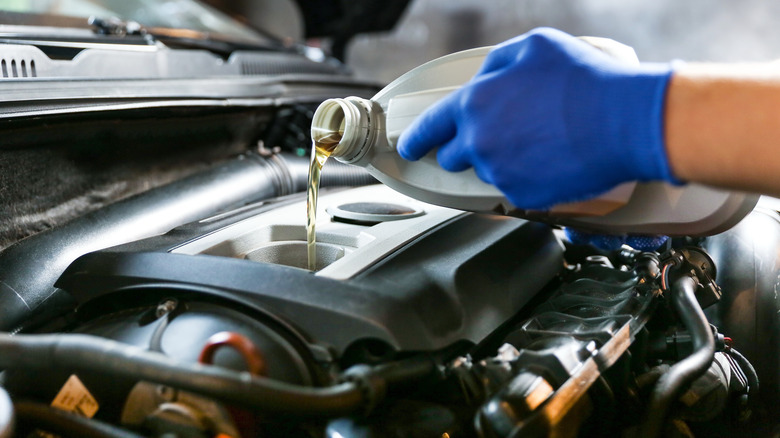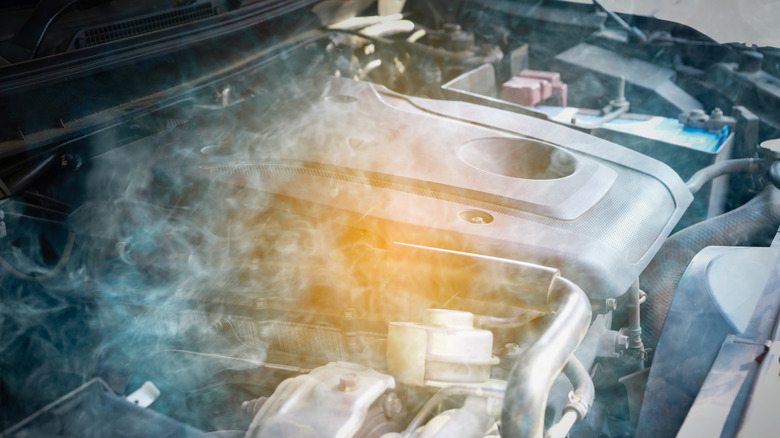What Happens If You Underfill Engine Oil?
Without a working, reliable engine, your vehicle isn't going anywhere. One of the most important things a car owner can do to keep their vehicle in tip-top shape is regular maintenance, including getting their oil changed on a consistent basis. Motor oil, whether you use synthetic or conventional, is what keeps the individual parts of an engine lubricated and moving smoothly, preventing excessive wear from friction. Oil also helps keep the engine clean by picking up and removing excess debris in the engine.
Keeping your oil at an appropriate level, meaning you change your oil when you're supposed to, will help your vehicle last longer and, hopefully, avoid engine issues. However, having too little or too much oil in your vehicle can cause some significant and serious issues. Underfilling your motor oil, meaning you have less oil in your vehicle than recommended, can damage and potentially destroy your engine.
There are a few signs that can help indicate if you have an oil leak or an underfilled oil reservoir. The first indication is usually the oil pressure light on your dashboard illuminating. If you see this light come on, you should immediately consult your mechanic. If you change your own oil, that light confirms that it is time to do so. Unusual engine noises, such as knocking or ticking, can be a sign that your oil is underfilled. A final sign is if your engine is running at higher temperatures than normal.
Significant issues cause by low oil levels
Underfilling your oil can cause the engine to overheat and damage the engine's components, including the crankshaft, camshaft, and bearings. As we mentioned earlier, the role of oil is to keep the engine components lubricated and minimize friction between the metal parts. Excess friction can lead ot increased heat and severe wear and tear over the lifetime of a vehicle.
Excessive heat inside the engine is meant to be absorbed by motor oil. Low or underfilled oil will cause that heat to build up. Overheated engine parts can become unaligned and warped, causing even more damage to themselves and other areas.
Since oil also helps clean the engine of sludge, dirt, and metal bits, underfilling your engine oil will also lead to an excess of debris. Having too much debris in your engine will severely limit performance and, if not taken care of, will cause significant damage to your engine.
Making sure your oil is level
Doing any type of car maintenance can seem like a daunting task. One of the easiest things you can do to help maintain the life of your vehicle is to check your oil levels. Yes, a modern car's computer should tell you when you need to change your oil, but in the event of a malfunction or an older car that doesn't have a built-in sensor, you should know how to read it yourself.
The first step in manually checking your own oil is to turn your car off, open the hood, and let it cool down. The last thing you want to do is stick your hands into a hot engine bay. Your engine should have a dipstick, which is a metal stick that is used to determine the oil levels in a vehicle. The process is simple: lower the dipstick into the oil, pull it out, and determine where the top of the oil line is. Just be sure to wipe the dipstick with a rag afterward to remove the excess oil.
If you would rather let a professional deal with the internals of your vehicles, that's no problem. Be sure to follow regularly scheduled oil changes, as that will ensure your vehicle's oil levels are topped off and your vehicle is receiving uncontaminated oil.


